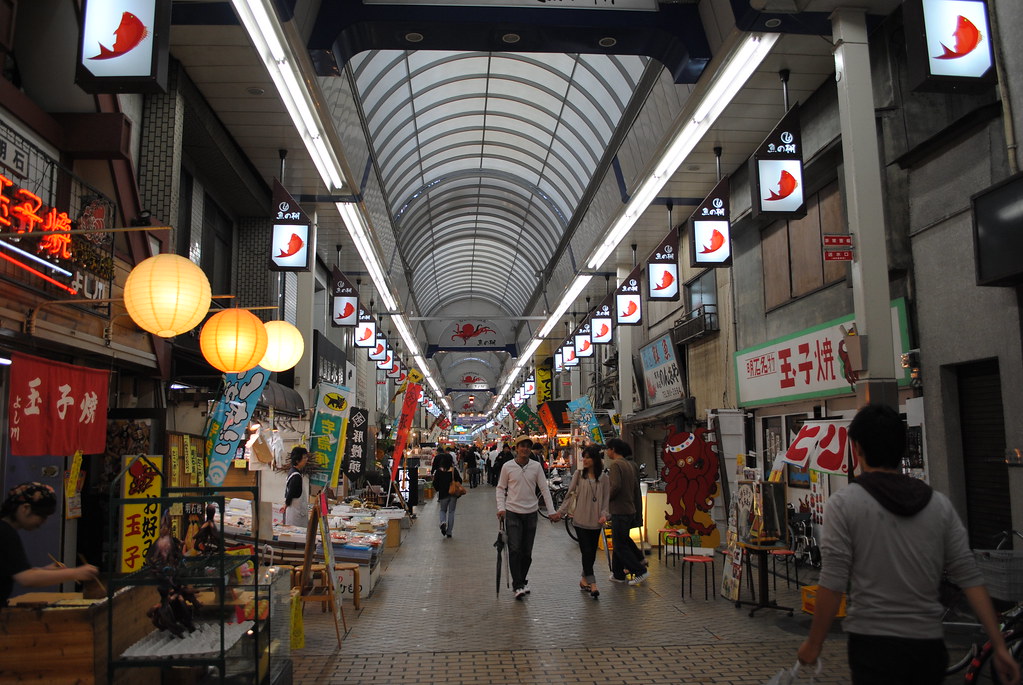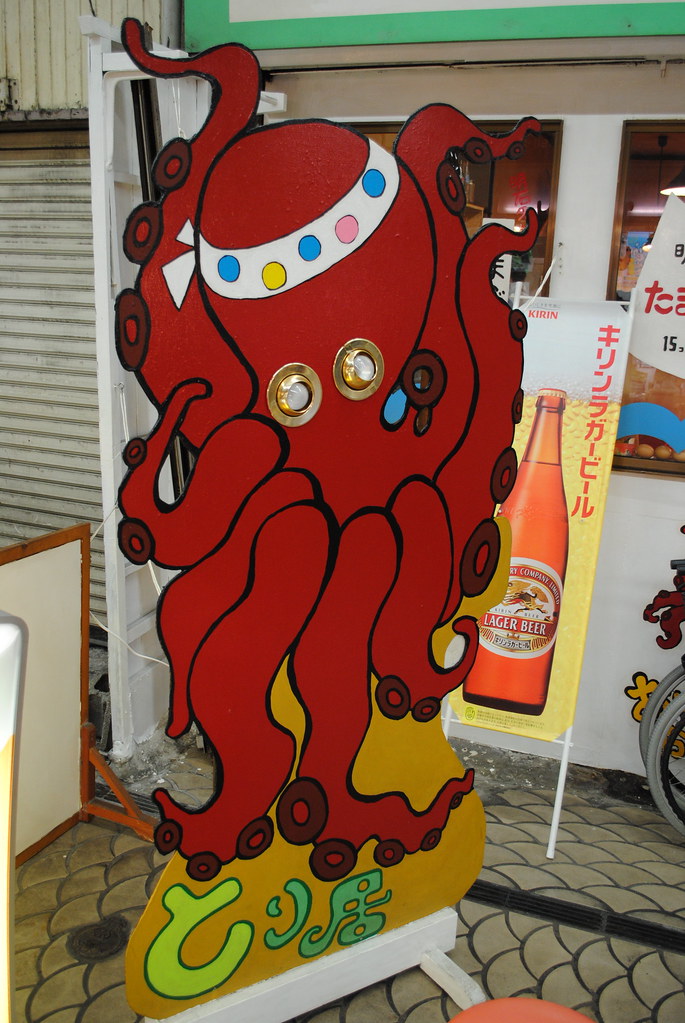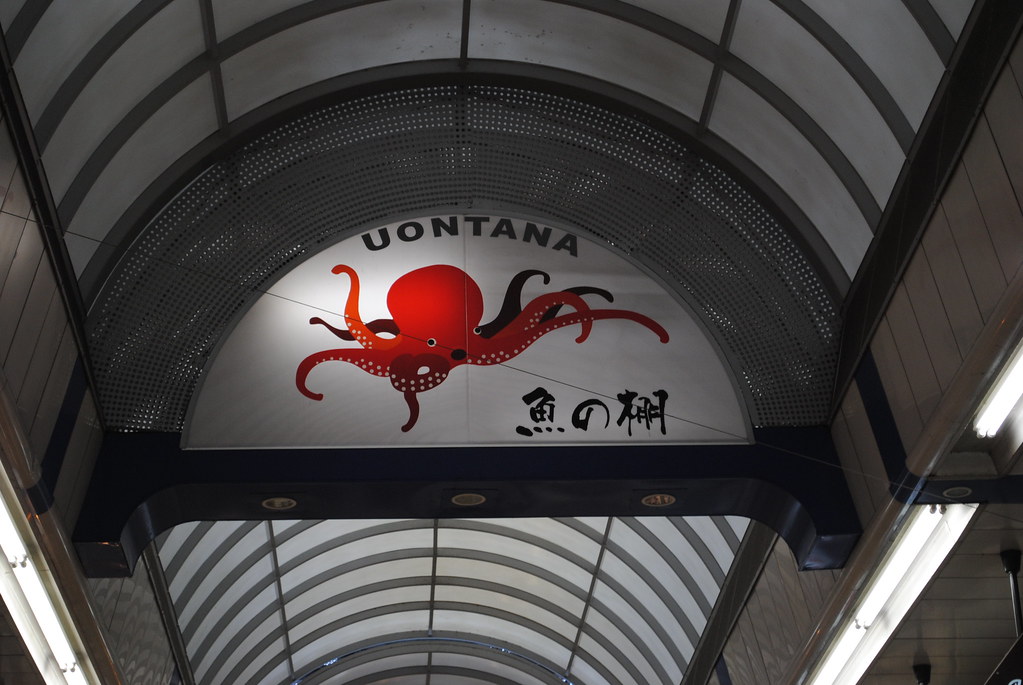明石 is a waterfront city in 兵庫 (ひょうご - Hyogo) that sits between 神戸 (こうべ - Kobe) and 姫路 (ひめじ - Himeji). Like both of these cities, it's been considered a romantic place for a very long time and features extensively in old poems and literature. However, it's only a fraction of the size and population of 神戸 and its castle isn't nearly as impressive as the one in 姫路, so there's absolutely no reason to go there. If you believe that, I've got a bridge to sell you... and it's a big one.
明石 is best known for 明石海峡大橋 (あかしかいきょうおおはし - akashi kaikyou oohashi - literally "Akashi Strait big bridge"), sometimes referred to as the "Pearl Bridge". It connects the 神戸 area with 淡路島 (あわじしま - awajishima - Awaji Island) in the southern part of 兵庫. In total, it's 3911m long; its 1991m central span is the longest of any suspension bridge in the world and at 297m tall, its towers stretch almost as high as 東京タワー (とうきょうたわー - toukyou tawaa - Tokyo Tower). "Enormous" doesn't begin to explain it, particularly when you get up close.
The four kilometre wide 明石海峡 (あかしかいきょう - akashikaikyou - Akashi Strait) is notoriously rough, with its currents reaching up to 16km/hr; this apparently made the bridge extremely difficult to build. The shipping lanes in the area are also very busy, so it had to be designed with a clearance of 65 metres to allow the largest ships to be able to pass through comfortably. It's been built to last as well - thousands of cubic metres of concrete anchor the bridge to the sea floor and it can withstand wind speeds of up to 288km/hr. It's also designed to withstand earthquakes up to 8.5 on the Richter scale, for very good reason; in 1995, a 7.3 earthquake called the 阪神淡路大震災 (はんしんあわじだいしんさい - hanshin awaji daishinsai - Hanshin-Awaji Great Earthquake) struck just one kilometre from the 明石海峡大橋 while it was still under construction, shifting the towers 80 centimetres further apart (which is why its spans are 1991/3911m and not 1990/3910m!). Some adjustments were made to protect it for the future at that time and a lot of this structural strength is owed to the design of the cables.
Each 112cm thick cable is made up of 290 strands of 127 wires; each strand is colour coded in the photo above so you can separate them visually. This probably seems extreme until you imagine a hanging bridge nearly four kilometres long, covered by an extremely busy six lane expressway. People wanting to visit 淡路島 have now had the option of driving or taking a bus, where prior to its completion in 1998 you were forced to endure the boat ride across the choppy water. It's even possible to drive right across 淡路島 and cross the 大鳴門橋 (おおなるときょう - oonaruto kyou - Oonaruto Bridge) into 四国 (しこく - Shikoku). You have to pay tolls for each bridge and expressway on the way, but it's a gorgeous drive and a very good way to make your ancestors jealous.
By day, the 明石海峡大橋 is a landmark visible for miles in every direction and by night it's illuminated by coloured lights that run all the way over its cables. Like the Kings Park Lights, the colours are changed to match events and public holidays throughout the year and at a set time every night, it flashes with rainbow colours as well. There are tours conducted which allow you to see the view from the tops of the towers and museums on either end that document the impressive history of its ten year construction period; it seems bridges aren't just for crossing any more!
Of course, there's more to 明石 than the 明石海峡大橋. For a lot of people, 明石 means たこ (tako - octopus) - the city is well known for its たこ fishing and walking around, you'd be forgiven for thinking that they were the city's mascot. Some businesses even seem to be named after them - the local "たこフェリー" (tako ferii - octopus ferry) that operates next to 明石海峡大橋 springs to mind. Apart from that, たこ seem to feature on nearly every signboard, shopfront and mural to be found.
There might be another explanation for the link; the city lends its name to what's known as 明石焼き (あかしやき - akashiyaki), which are pieces of たこ placed in batter and grilled into a bite-sized ball shape. The concept is very similar to たこ焼き (takoyaki), except that 明石焼き are dipped into a soupy だし (dashi - stock) before being eaten whereas たこ焼き are brushed with a thick, sweet sauce.
The batter seems different as well - たこ焼き come out quite crisp and browned on the outside after they've been grilled while 明石焼き are softer, eggier and more golden-coloured. In both cases though, they can be eaten straight out of the box with a toothpick which makes them an excellent snack to have on the run. As the sign above says, "お持ち帰り出来ます" (おもちかえりできます - omochikaeri dekimasu - "takeaway is available").
Perhaps the most famous place to buy 明石焼き and other seafood is a fish market called 魚の棚 (うおのたな - uo no tana - literally "shelves of fish"). In conversation, people drop the middle syllable and refer to it as "uontana" for short. It's a long 商店街 (しょうてんがい - shoutengai - covered shopping street) much like those in 大阪 (おおさか - Osaka), but in this case made up exclusively of fish markets. Fishermen in gumboots line up along the entire strip shouting about today's bargains, which in some cases are fresh enough to still be flapping.
魚の棚 is obviously on to a winning formula, because it has been running for 400 years. A fishing port seems an obvious place to put a fish market, especially in the distant past when refrigerated transport likely meant "do it during winter". It was started around the same time that 明石城 (あかしじょう - akashijou - Akashi Castle) was built and while the castle now lies almost entirely in ruins, 魚の棚 is still going strong. When people didn't have fridges or freezers at home, getting fresh fish was a necessity; now it's a luxury enjoyed by locals and tourists alike. When I say "fresh" I mean it - one fisherman stood chatting to his customers, holding a very unimpressed たこ and patiently pulling its suckers off his hand at the end of each sentence.
明石 is a harbour town through and through; whether you're peering off the side of the bridge at it, tootling across it in a ferry or sampling some of its freshest seafood, it's hard to escape the water. Ancient landmarks or no, this is a city that's been around for a very long time and one way or another, you should try to pass through at some point. Oh, and if you're still in the market for a bridge, this one was built for about 500 billion yen - I hope you've been saving up.









No comments:
Post a Comment
If you have any questions or additions, I would love to hear from you. I may not know the answer, but I'll do my best to find out in any case! You can post anonymously if you like, but abusive/unintelligible/inappropriate comments will not be published.